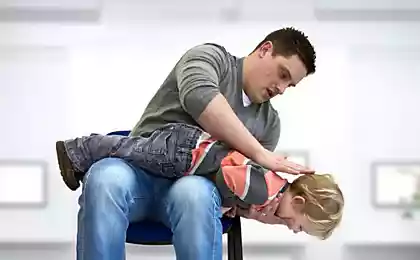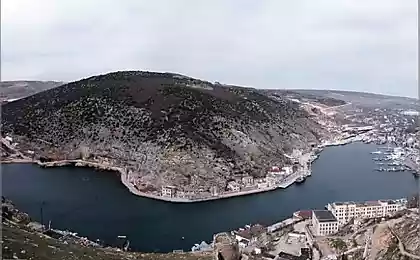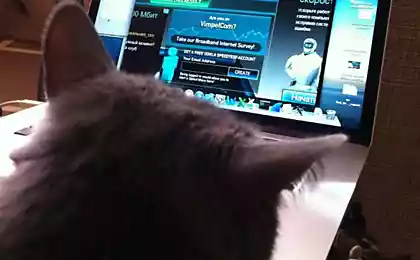607
"Object 825 GTS."
The second point of interest in addition to stunning views of Balaklava - the so-called "Object 825 GTS," the former underground plant to repair submarines and equipment. It is located inside the rock on the western shore of the bay and also has access from the sea. Plant a total area of 9600 square meters. m, would not suffer even in the case of a direct nuclear strike capacity of up to 100 Km (five times more powerful than the bomb dropped on Hiroshima and Nagasaki), and in addition to the fourteen submarines, in the case of military threat could accommodate up to three thousand civilians. In 1994, the latter went from Balaklava submarine and the plant ceased operations. Now in its place is a museum.
7 photo + letter
Source.

Of interest are not so much the exhibits (they are there a little, and even less interesting), but the atmosphere of the former secret facility (during the Cold War, Balaklava was a closed city). Entrance to the museum where a pontoon bridge swim submarines:

A story in brief is as follows: in the period after the Second World War, the two superpowers - the USSR and the United States stepped up its nuclear arsenal, threatening each other preventive strikes and retaliation. It was then that Stalin gave Beria (who oversaw while "Nuclear Project") a secret directive: to find a place where they could be based submarines for a retaliatory nuclear strike. After several years of research, the choice fell on the quiet town of Balaklava and immediately classified. Balaclava has been selected for the construction of the underground complex is not accidental. The narrow winding Strait width of only 200-400 m harbor harbor not only from storms, but also from prying eyes - from the open sea, it is not visible under any angle.

The underground complex was built four years - from 1957 to 1961. When the building was evacuated about 120 thousand. Tons of rock. To ensure the secrecy of the export is performed at night on barges to the open sea.
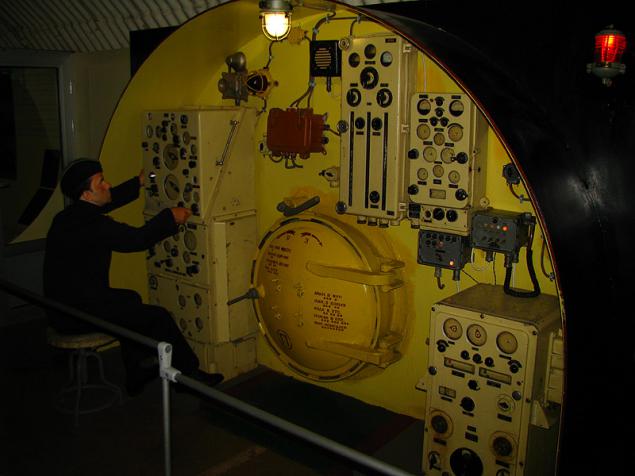
The plant was designed for the repair and maintenance of submarines, 613th and 633rd projects as well as for the storage of ammunition intended for these submarines. In the central tunnel (length 602 meters) can accommodate up to 7 submarines of these projects, and if necessary, all the galleries - up to 14 submarines of different classes. Loading equipment in peacetime was carried out on the pier, taking into account the movement of spy satellites potential enemy. When loading the nuclear threat was to be carried out inside the base through a special tunnel. In the arsenal of nuclear weapons are also stored.
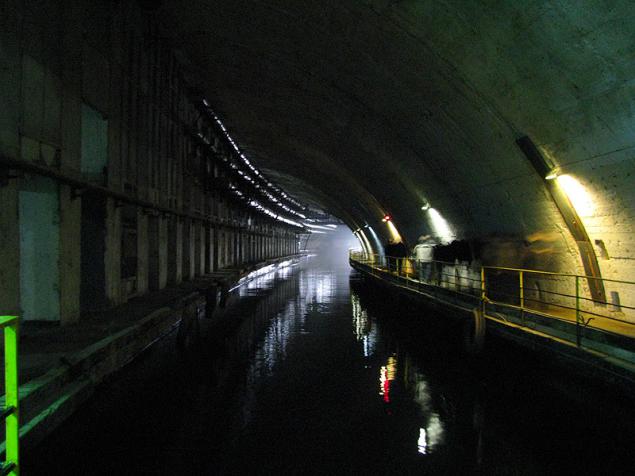
The drive is still working ventilation system:

Sea mines:
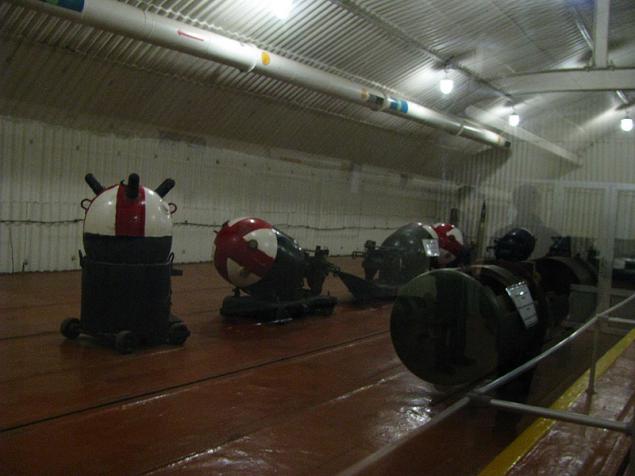
Source:
7 photo + letter
Source.

Of interest are not so much the exhibits (they are there a little, and even less interesting), but the atmosphere of the former secret facility (during the Cold War, Balaklava was a closed city). Entrance to the museum where a pontoon bridge swim submarines:

A story in brief is as follows: in the period after the Second World War, the two superpowers - the USSR and the United States stepped up its nuclear arsenal, threatening each other preventive strikes and retaliation. It was then that Stalin gave Beria (who oversaw while "Nuclear Project") a secret directive: to find a place where they could be based submarines for a retaliatory nuclear strike. After several years of research, the choice fell on the quiet town of Balaklava and immediately classified. Balaclava has been selected for the construction of the underground complex is not accidental. The narrow winding Strait width of only 200-400 m harbor harbor not only from storms, but also from prying eyes - from the open sea, it is not visible under any angle.

The underground complex was built four years - from 1957 to 1961. When the building was evacuated about 120 thousand. Tons of rock. To ensure the secrecy of the export is performed at night on barges to the open sea.

The plant was designed for the repair and maintenance of submarines, 613th and 633rd projects as well as for the storage of ammunition intended for these submarines. In the central tunnel (length 602 meters) can accommodate up to 7 submarines of these projects, and if necessary, all the galleries - up to 14 submarines of different classes. Loading equipment in peacetime was carried out on the pier, taking into account the movement of spy satellites potential enemy. When loading the nuclear threat was to be carried out inside the base through a special tunnel. In the arsenal of nuclear weapons are also stored.

The drive is still working ventilation system:

Sea mines:

Source:



